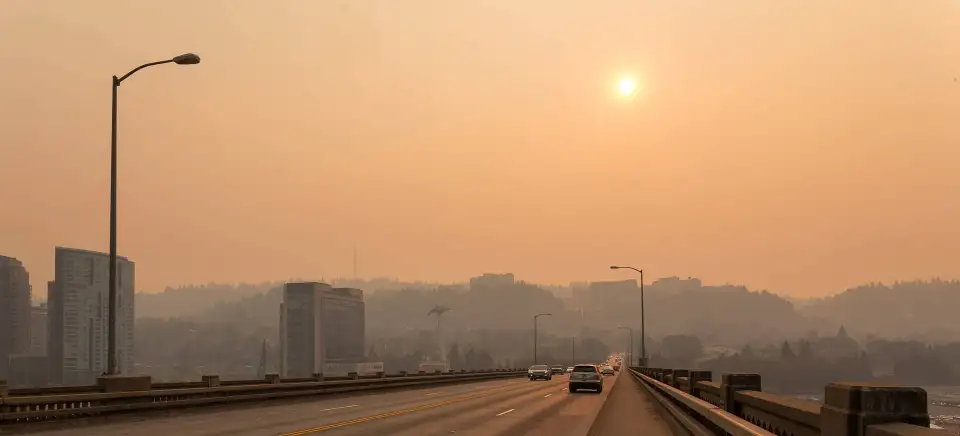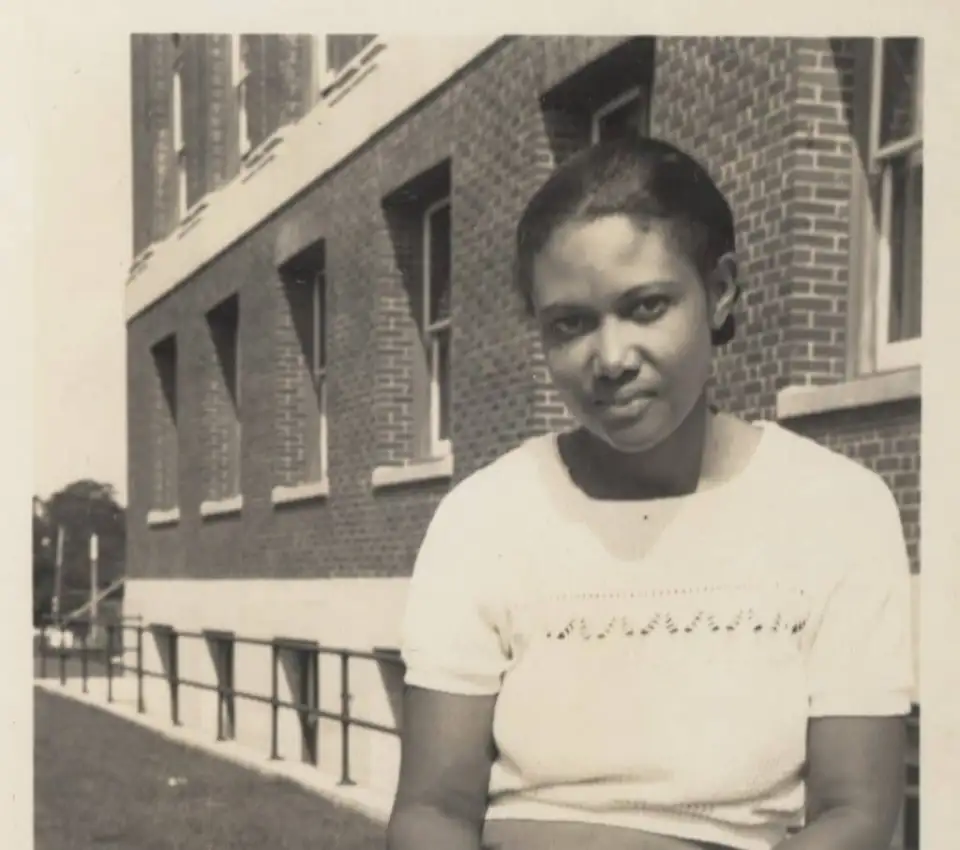
The anxiety-inducing Intergovernmental Panel on Climate Change (IPCC) report released in mid-2021 reaffirmed what many working in the high-performance building industry already knew: buildings will play a key role in mitigating carbon emissions.
While mitigating carbon emissions is a crucial societal goal, investment to create better buildings offers other significant co-benefits. A wealth of research shows that a building’s level of indoor air quality and comfort can also be a determinant of well-being. With humans spending up to 90% of their time inside, where the concentrations of some pollutants are often two to five times higher than typical outdoor levels, buildings also represent a critical way to achieve improved public health outcomes, equity, and justice, especially for low-income households.
Understanding the intersection of environmental, social, and economic inequalities people face can help organizations strategically take climate action. But, the reality is that, in the green building and clean energy sectors, there is a lack of diversity at all levels of leadership that has slowed the implementation of policies that most strategically meet climate and equity objectives. However, there are some programs, at a variety of levels, that are working to increase diversity, equity, and inclusion (DEI) in high-performance building and climate-related workplaces.
The Roger Arliner Young (RAY) Diversity Fellowship Program is one program focused on increasing opportunities for people of color to learn about, engage with, and enter the conservation and clean energy non-governmental organization (NGO) sectors. RAY forms partnerships with industry organizations and works with them to host paid fellows on staff for two years. The program focuses on transformative career growth, community, and mentorship.

“We are giving people the opportunity to develop an interest in doing work around buildings, just energy, and fair and equal housing,” says Steven King, director of RAY. “We also need to provide workforce development programs that are not just about putting up solar panels or doing maintenance for windmills or building retrofitting. That's highly important, yes. But the next thing, and the thing that many young people are interested in, is the innovation and leadership work that's taking place.”
King also points out that those who do not attend or complete college need access to be involved in innovative design work as well, "And we need to get them involved from a place where they're not just doing low-level paying jobs that don't offer advanced career placement.”
DEI and job creation are key elements of climate action
Over the next three decades, federal and local policy decisions calling for more efficiency in buildings through envelope measures and equipment are expected to drastically increase demand for high-performance and Passive House design and increase building and clean energy industry employment needs. New federal funds for carbon reductions, low-income solar and other clean energy technologies, clean energy development, and energy and climate programs could generate millions of near-term new clean energy jobs—jobs that pay 25% more than the national median wage of $34,248.45, according to a 2019 U.S. Department of Energy finding.
But, who is going to get these jobs? “Many of these high performing buildings are not located in communities of color, or in low-to-moderate income communities,” says Kathryn Wright, program director for Building Energy at the Urban Sustainability Directors Network (USDN). There is a disconnect between the people living in these communities, the people designing and constructing the buildings, and the people creating policies that impact buildings. Wright adds that oftentimes this disconnect can mean residents don’t realize all the various career paths related to designing, building, and advocating for high-performance buildings, and therefore they don’t pursue them.
“We're pushing for policies such as building performance standards for existing and new buildings, which are going to require investments in retrofits to suddenly ramp up. Many cities and states don’t have a clear workforce development strategy to coincide with this,” says Wright. “There needs to be more of a strategy. We need to go beyond just training people to do entry-level jobs. The scale and level of recruitment we'll actually need to meet our own ambitions is not anywhere near what it needs to be.”
The question that remains is, how will cities, states, and the building industry get there?
About 61% of clean energy workers across America are white non-Hispanics and less than 30% of all workers in the sector identify as women, according to “Help Wanted: Diversity in Clean Energy”, a 2021 E2 Report, which expands on data from the 2021 U.S. Energy and Employment Report (USEER) produced by the U.S. Department of Energy. The E2 report cites President Biden’s Justice40 initiative that mandates that 40% of the benefits from federal climate action go to disadvantaged communities as a step to advance environmental justice.
In New York, which has one of the most aggressive clean energy and climate agendas in the country, Governor Kathy Hochul recently announced $6 million over three years to support 150 Climate Justice Fellowship opportunities for individuals across the state currently residing in historically disadvantaged communities or from priority populations. Similar to RAY, the program will match host employers to support the professional development, training, and mentoring of full-time fellows.
“After 400 years of compounded discrimination, it is time for high-quality education and job training opportunities like this. In one fell swoop, the Climate Justice Fellowship will serve to eliminate racial disparities in both career opportunities and community environmental health and safety, and move BIPOC [Black, Indigenous, People of Color] communities closer to equity than ever before,” said 400 Foundation VP and co-founder and Historic Emanuel AME Church Pastor Rev. Dr. Kahli C. Mootoo in a press release.
New York State has already dedicated more than $120 million through 2025 to support clean energy workforce development and training initiatives to reduce businesses’ cost of attracting and hiring new workers. Following this commitment New York’s clean energy economy saw 8.9% employment growth between 2016 and 2019, stronger growth than the State’s overall economy, which grew by 3.4% in that time.
Insular recruitment and networks contribute to inequalities
Despite there being a wide range of channels for recruiting and hiring new employees, most people still find jobs through informal processes. Research shows recruitment processes and networks may perpetuate racial inequality in the labor market. “The building sector is quite small, so a lot of the recruitment processes, including word of mouth, are very insular,” Wright says. “Employers aren't really thinking very much outside of who they consider being a ‘traditional’ building industry or building science professional.”
One of the advantages of the RAY Fellowship is that clean energy fellows grow their own intersectional network. Fellows meet and connect with professionals in a wide range of careers varying from building design to housing affordability to community organizing and can share experiences and connections across cohorts year after year.
Similarly, the NextGen program, launched by New Buildings Institute earlier this year, is a cohort-model professional development program. While RAY is a career placement program, NextGen is tailored for undergraduate students who are interested in careers in energy efficiency and carbon-neutral buildings. The six-month engagement, which is completely free to the participants, provides opportunities for advanced learning, resume building, mentorship, networking and more.
Continuing to break down barriers for a more diverse workforce
Like environmental and clean energy NGOs, architecture firms are starting to answer a call for better transparency and accountability. Several organizations— including the American Institute of Architects (AIA), the National Council of Architectural Registration Boards (NCARB), and AIA San Francisco’s Equity by Design committee—have published demographic information in an effort to understand the current state of diversity in the profession. Based on the 2020 NCARB By the Numbers report, less than 1 in 5 new architects identify as a person of color, and nearly 2 in 5 new architects identify as women.
NCARB and the National Organization of Minority Architects (NOMA) teamed up to publish The Baseline on Belonging Report in early 2020, to understand why professionals endure obstacles on the path to architectural licensure. Early findings showed that people of color—especially individuals who identify as Black or African American—face greater difficulty regarding firm culture, and this can impact their decisions to continue working in the architecture profession.
Often, firms are not sure how to begin to address systemic inequalities that show up in the workplace. Alice Liao’s three-part series in Architecture Magazine chronicles how firms can take measurable action. Part 1 explores the barriers people of color face in entering the design profession; Part 2 describes organizations addressing some of these barriers; and Part 3 looks at firm initiatives to create a more equitable, diverse work environment.
While the Passive House design community has no demographic data reports available, there are efforts happening to address workforce diversity. The Just Label, introduced in 2019 by the International Living Future Institute, provides a platform for organizations to disclose their operations, including how they treat their employees and where they make financial and community investments. It also offers a way for companies to set goals and measure progress in the areas of DEI and employee engagement. In a parallel effort, Astrid Countee and Johnny Rezvani have led several Centering Equity in Passive House workshops and developed a worksheet that outlines a practical approach for firms to build a foundation of equity in hiring practices, dedicating funds, and internal transformations.
Programs like RAY are helping to build a common understanding for what a just transition to a clean energy economy looks like. “Part of our training with host supervisors is to talk about everything from microaggressions, tokenism, imposter syndrome, power, white dominant norms and moving to a non-racist organization. But that's just the start,” says Steven King, director of RAY. “The real work takes place over the two years of the fellowship, where we have a chance to go a little bit deeper with the supervisors and hopefully work with them on DEI (diversity, equity, inclusion) work that's taking place in the organization.”
As we transition to a clean energy economy, work on high-performance and Passive House buildings will only skyrocket and call for vastly more workforce planning and career placement programs nationally. Programs that make it their mission to increase diversity, equity, and inclusion in the building and clean energy sectors are an integral investment in addressing the climate crisis, because they help highlight how building construction and design can shape the wellbeing of entire groups of people. These programs move the industry forwards towards a culture that is accountable and transparent in acknowledging the deeply rooted prejudice in our systems and policies, and personal biases that create racial and wealth inequalities, and further disenfranchise people and the neighborhoods in which they live.
Feature image courtesy of Shutterstock Portland, OR during a time with a wildfire in the region.